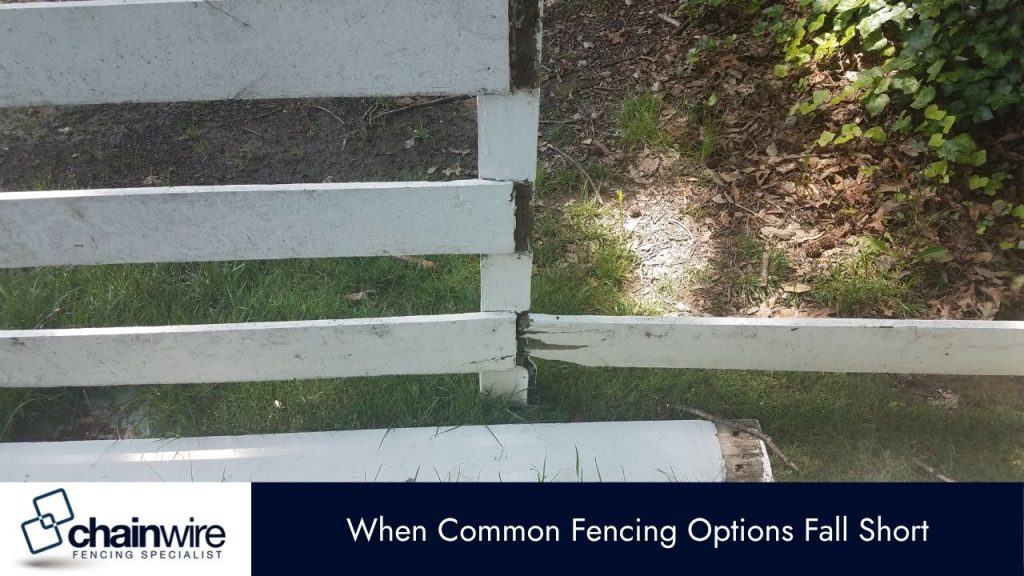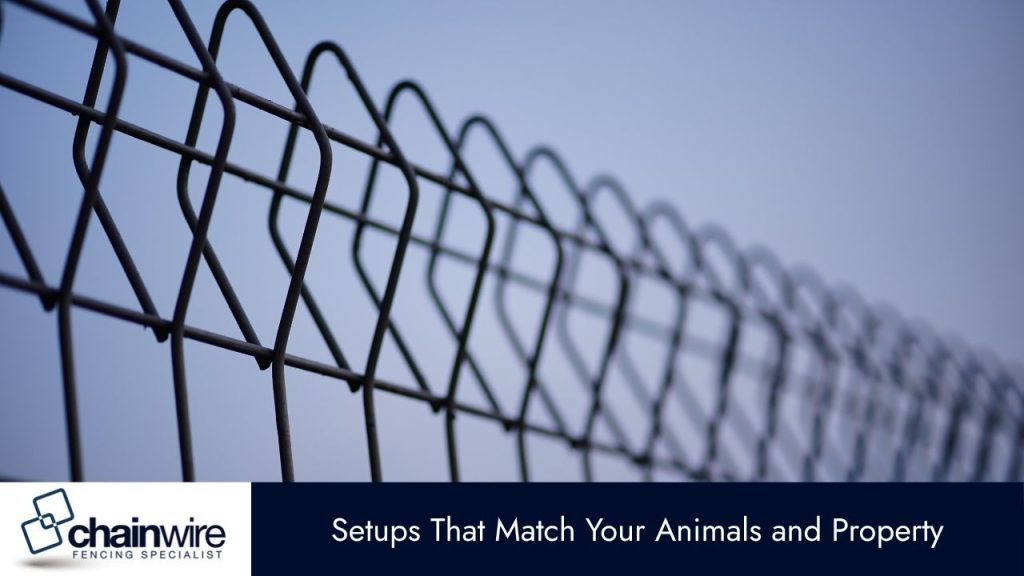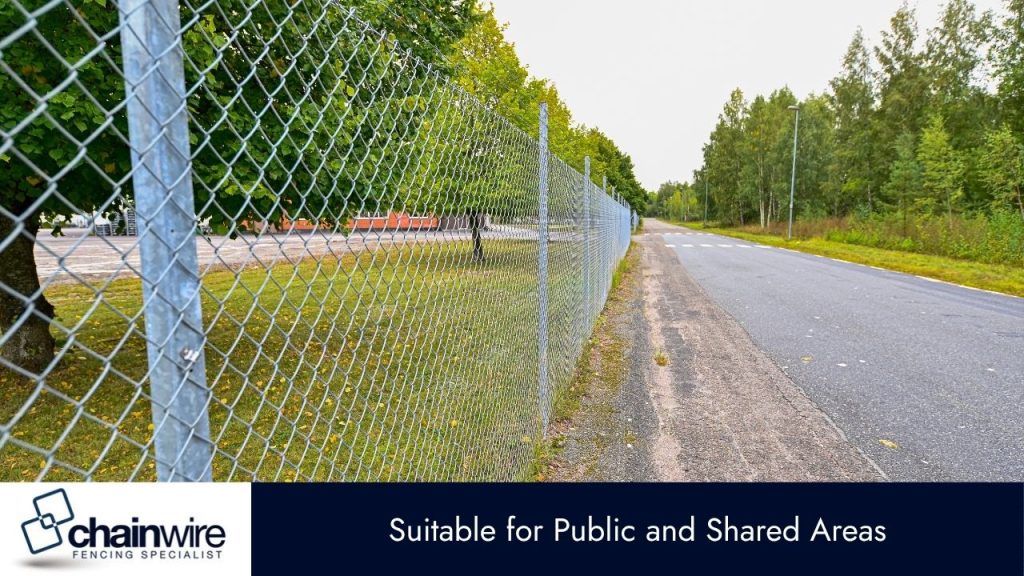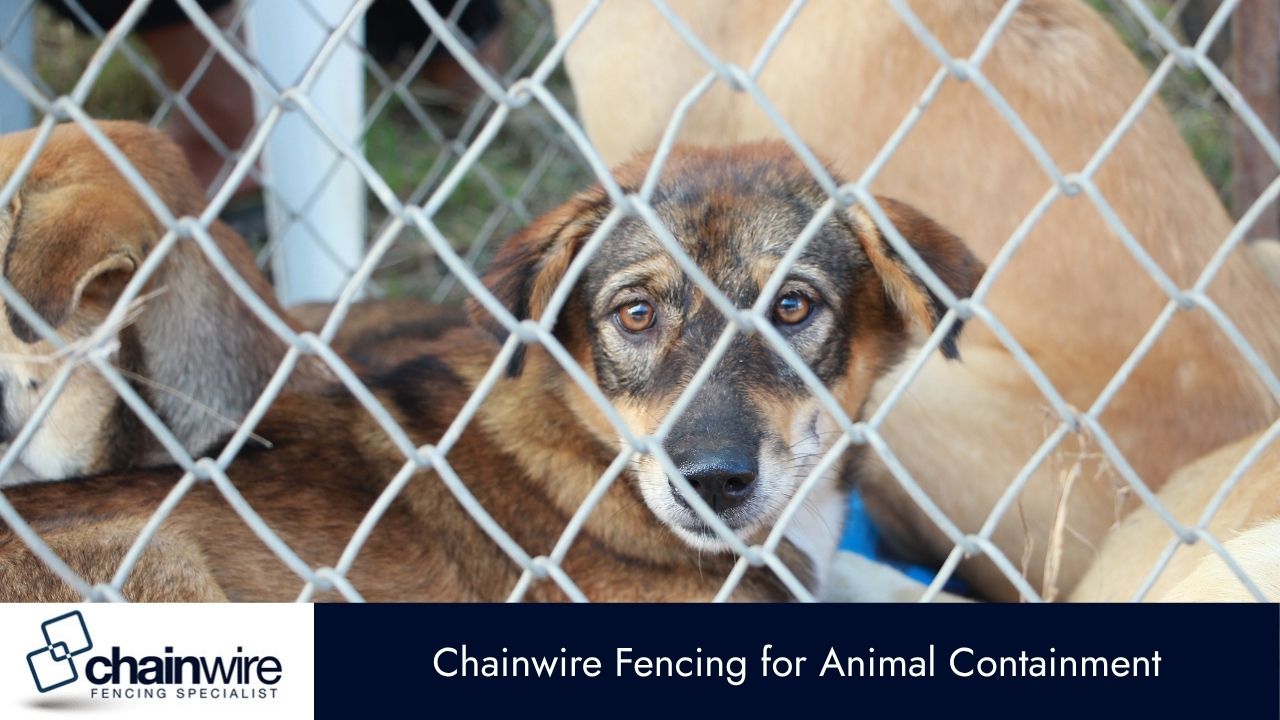Fencing that isn’t built for animals causes more issues than it solves. Livestock break out, dogs dig under, and unwanted wildlife gets in. Weak mesh, rotting posts, or fences meant just for appearance lead to injuries, damage, and neighbour complaints.
Many only notice the problem after something happens—an animal escapes, crops get ruined, or someone gets hurt.
Fixing damage or replacing poor fencing wastes time and money. Some setups also need tools or upkeep most people don’t want to deal with. What seems cheap upfront often fails under real use—especially when animals push, climb, or dig.
Chainwire fencing keeps animals in without making the job harder. It holds up well, adapts to any layout, and doesn’t need much attention after installation. You can build in dig guards, mesh layers, or gates to match how the space is used.
It suits paddocks, dog zones, pens, and shared areas—and helps cut down escape risks and repair costs.
When Common Fencing Options Fall Short
Standard fences might seem fine at first, but many break down quickly when used with animals. Loose mesh, sagging wires, sharp points, and weak joints can create problems you didn’t expect.
Some of the issues that often come up include:
- Animals breaking through or jumping over fences
- Entanglement that causes injury
- Gaps that allow small animals to escape or pests to enter
- Frequent repairs or complete replacements after bad weather
These are avoidable with the right materials and proper layout. That’s where chainwire fencing proves its value.

Why More Property Owners Choose Chainwire
Chainwire fencing isn’t just for schools or sports grounds. It’s widely used on farms, acreages, and facilities because it combines visibility, strength, and flexibility in one system.
You can use it for:
- Livestock runs and feed zones
- Dog enclosures or training areas
- Poultry pens with added mesh
- Wildlife boundary fencing
- Holding areas on larger properties
Its design makes it easy to check on animals while still keeping them fully contained. For property owners planning secure containment, we also install animal fencing systems like these across mixed-use spaces where safety and control are a priority.
Setups That Match Your Animals and Property
No two animal zones are the same. Chainwire fencing allows you to adjust your layout based on the type and behaviour of animals you’re managing.
- Use buried mesh or footings to stop digging
- Add inward-angled sections for climbing breeds
- Overlay tighter mesh at the bottom to block smaller pests
You’re not locked into one configuration—you can plan your enclosure to suit each species.

Built to Handle Harsh Weather and Daily Wear
Australian properties deal with strong winds, sun, and rain. Chainwire holds up better than many common alternatives. It’s available with galvanised or coated finishes that prevent rust, and it doesn’t warp or weaken over time like timber.
If a section ever needs fixing, it’s quick to replace without disturbing the rest of the fence. This makes it a reliable long-term option with lower repair costs.
Safe for Animals, Safer for People Too
Poor fencing doesn’t just risk your animals—it can create legal or safety problems. Animals escaping near roads, damaging crops, or coming into contact with people can lead to bigger issues.
Chainwire fencing keeps animals in place without causing harm. It has no sharp edges or loose parts, and its open pattern reduces the chance of injury from getting caught or stuck.
This creates a safer space for both animals and anyone working near them.
Suitable for Public and Shared Areas
Some properties need fencing that’s not just secure—but also visible. Chainwire works well near roads, footpaths, and shared access areas because it allows for clear sightlines and doesn’t block airflow.
You’ll often see it used in council enclosures, roadside barriers, or public facilities where animal movement needs to be controlled without affecting visibility.
Signage and reflective tape can also be attached easily when needed.

Things to Consider Before You Build
Before choosing chainwire fencing for your animals, think through the full setup. Key points to review include:
- Ground slope, tree lines, and access points
- The size, strength, and behaviour of each animal type
- Whether fencing will be temporary or permanent
- Distance from roads, public paths, or neighbours
- Budget and long-term repair needs
Planning the layout early will help avoid gaps, tension issues, or weak entry points that animals could exploit.
What We Recommend Before You Build
When setting up fencing for animals, start with the layout. We always advise marking out gate access, water points, and handling zones first. This makes movement easier and avoids changes later.
If you’re working with dogs or smaller animals, include base mesh or buried skirting to stop digging. For larger animals, check your post spacing and fence height—don’t rely on standard measurements if the animals are strong or active.
We also recommend reinforcing corners and avoiding long runs without support. This keeps tension even and reduces future repairs. Plan for how your setup might change—splitting paddocks, adding more animals, or building in holding pens.
If you need help figuring out the right setup, we’re here to walk you through it. Reach out to us and get a quote based on how your property actually works.

